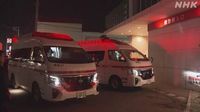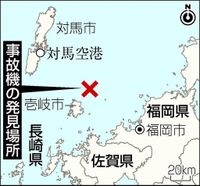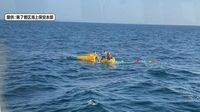On April 6, 2025, a tragic incident unfolded in Nagasaki Prefecture when a medical transport helicopter went missing off the coast of Tsushima. The 7th Regional Coast Guard Headquarters received a report at around 2:50 PM concerning the helicopter's disappearance, which was carrying six individuals, including a patient, a doctor, and a nurse.
According to the Coast Guard, the helicopter departed Tsushima Airport at approximately 1:30 PM, en route to Fukuoka Waido Hospital in Fukuoka City, with the intention of transporting an 80-year-old female patient. However, contact with the aircraft was lost shortly after takeoff, around 1:43 PM.
By 5 PM, a patrol boat located the overturned helicopter about 27 kilometers northeast of Tsushima Island. During the search, three of the six individuals on board were found clinging to the helicopter's emergency floats and were rescued. These included the pilot, a mechanic, and a nurse, all of whom were conscious but showed signs of hypothermia and were subsequently transported to a hospital in Fukuoka City.
The remaining three individuals, which included the elderly patient, her male companion, and a doctor, were found inside the helicopter. Unfortunately, they were in critical condition. Reports later confirmed that the 86-year-old patient, identified as Mitsuko Motoishi, had succumbed to her injuries and was pronounced dead upon arrival at the hospital. Both the male doctor, aged 34, and the accompanying family member, a 68-year-old man, were also in cardiopulmonary arrest when they were rescued.
Fukuoka Waido Hospital's director, Takaji Tominaga, expressed deep sorrow at a press conference, stating, "This accident is the height of sorrow." The hospital is currently providing life-saving treatment to the two surviving individuals.
The helicopter, operated by Es-Gee-Sea Saga Aviation, was specifically designated for medical transport and had been acquired in 2019. It is equipped with two EC135 engines and can carry a maximum of seven people, including the crew. The operation of this helicopter had been temporarily suspended last year following a fatal crash of another aircraft operated by the same company, which resulted in two deaths.
The Coast Guard has established a countermeasures headquarters and is actively investigating the circumstances surrounding the crash. They aim to determine the exact cause of the helicopter's failure, whether it was a mechanical issue or adverse weather conditions, as strong winds were reported in the area on the day of the incident.
As the search and rescue operations continued, the local community and medical staff were left reeling from the accident. The helicopter had been a vital part of the medical transport system in Tsushima, with over ten similar flights conducted in the previous year alone to transfer patients to Fukuoka hospitals.
Authorities are now reviewing safety protocols for medical helicopter operations in the region. The Nagasaki Prefectural Medical Policy Division has indicated that they will collaborate with local hospitals and the regional government to ensure the safety of future medical transports.
The tragic loss of life in this incident highlights the inherent risks associated with medical air transport, especially in remote areas where timely access to medical facilities can mean the difference between life and death. The community is now mourning the loss of a patient who was seeking vital medical care while grappling with the implications of the accident on future air transport services.
As investigations proceed, the focus remains on the well-being of the survivors and the families affected by this devastating event. The helicopter's operational history and safety measures will undoubtedly come under scrutiny as officials assess how to prevent such tragedies in the future.
This incident serves as a poignant reminder of the importance of safety in medical transport and the need for rigorous standards to protect patients and medical personnel alike.










